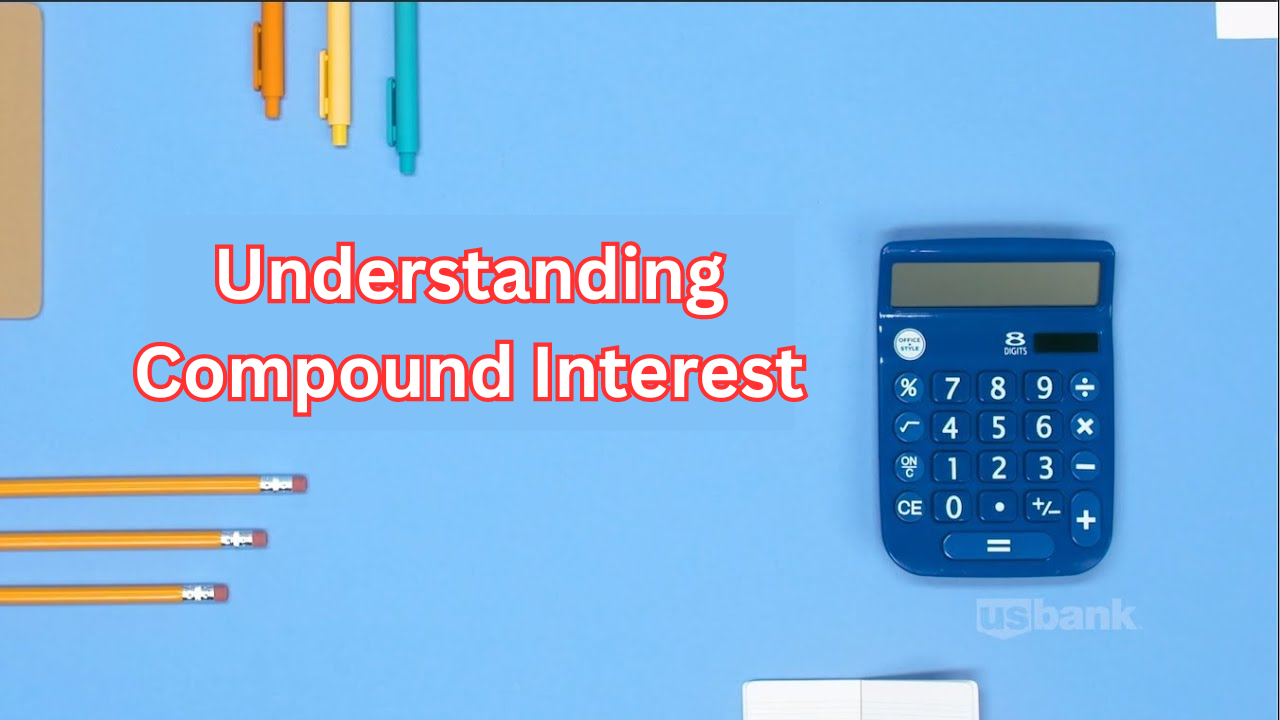One of the most important financial concepts in wealth building is compound interest. Its capacity to quicken the growth of investments over time has earned it the moniker eighth wonder of the world. . Gaining an understanding of compound interest can help you make better decisions and increase your wealth regardless of whether you are saving for retirement education or any other long-term financial objective.
In this article, we will break down what compound interest is, how it works, and why it’s key to building wealth over time.
What is Compound Interest?
The interest earned on your initial principal, the money you initially saved or invested, and the interest you’ve accumulated over time is known as compound interest. It’s interest on interest, to put it another way. This leads to exponential growth, implying that your money will grow more quickly the longer it is invested.
The primary distinction between simple interest and compound interest is that the former only yields interest on the initial principal. As the interest compounded on itself raising the total value of your investment compound interest allows your money to grow much more significantly over time.
How Compound Interest Works:
To better understand compound interest, let’s look at a basic example:
Consider making a $1000 investment with a 5% annual interest rate. Your investment generates $50 in interest (5 percent of $1000) in the first year increasing your total balance to $1050. You will receive interest on both the $1000 you initially invested and the $50 in interest from the first year in the second year. Therefore your balance will be $1102. 50 after you earn $52. 50 in interest for the second year. As your total balance rises over time so does the interest rate you pay.
The effect increases with the frequency of compounding interest (daily monthly quarterly or annually). For instance, since your balance is updated more frequently when interest is compounded monthly as opposed to annually you will accrue more interest.
The Compound Interest Formula:
The formula to calculate compound interest is:
A = P(1 + r/n)^(nt)
Where:
- A is the amount of money accumulated after n periods (including interest).
- P is the principal amount (initial investment).
- r is the annual interest rate (in decimal form, so 5% would be 0.05).
- n is the number of times interest is compounded per year.
- t is the number of years the money is invested or saved.
Let’s use the example from earlier. If you invest $1,000 at a 5% interest rate compounded annually for 10 years, the formula would look like this:
A = 1000(1 + 0.05/1)^(1*10)
This would give you:
A = 1000(1.05)^10 = 1000 * 1.62889 = $1,628.89
After 10 years, your $1,000 would grow to $1,628.89, without you adding any additional money. The longer you let the interest compound, the more powerful the effect becomes.
The Power of Time: Start Early to Maximize Gains:
Compound interest teaches you that time is your best ally. This is one of its main lessons. It takes longer for your money to grow if you start saving or investing earlier. If given time to compound over many years even modest investments have the potential to grow into sizable sums.
For example, let’s say two people start saving for retirement:
- Person A begins saving at age 25, investing $200 per month at a 7% annual interest rate until age 65.
- Person B waits until age 35 to start saving but invests $400 per month at the same interest rate until age 65.
Despite saving half as much each month Person A will have more money by the age of 65 than Person B because they started ten years earlier. Even with larger monthly contributions their money grows much more than someone who starts later thanks to the extra 10 years of compounding.
For this reason financial advisors frequently stress how crucial it is to begin investing as soon as possible. The power of compound interest can increase the sooner you start investing and the higher the returns.
Compound Interest in Debt: A Double-Edged Sword:
Compound interest is excellent for increasing investments and savings but it can be detrimental to your debt situation. Compound interest is frequently applied to credit card loans and other types of debt if you don’t pay off the entire amount the interest will keep rising.
For example, Should you keep a balance on a high-interest credit card you may find yourself paying a substantial amount over what you initially borrowed due to compound interest? Therefore in order to avoid falling into the trap of ballooning interest it’s critical to pay off high-interest debt as soon as possible.
Strategies to Harness the Power of Compound Interest
- Start Investing Early: Compound interest has a longer period to work in your favor the earlier you begin saving or investing.
- Contribute Regularly: Small but consistent contributions over time will add up and greatly accelerate the growth of your investment.
- Reinvest Your Earnings: Instead of withdrawing interest or dividends reinvest them to continue growing your balance.
- Take Advantage of Tax-Advantaged Accounts: To optimize your potential for compound interest consider using retirement accounts such as 401(k)s or IRAs which come with tax advantages.
- Minimize Debt: Steer clear of compounding high-interest debt as it will gradually deplete your assets.
Conclusion:
Understanding compound interest is essential to growing wealth over time. By starting early, contributing regularly, and letting your investments grow, you can harness the power of compounding to reach your financial goals faster. Whether you’re saving for retirement, a major purchase, or simply building your wealth, compound interest is the key to unlocking exponential growth.
The earlier you start and the more disciplined you are, the greater the impact compound interest can have on your financial future. Make the most of this powerful tool, and watch your wealth grow over time.
